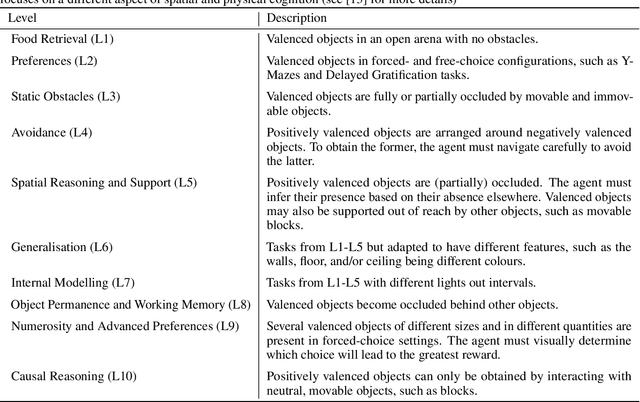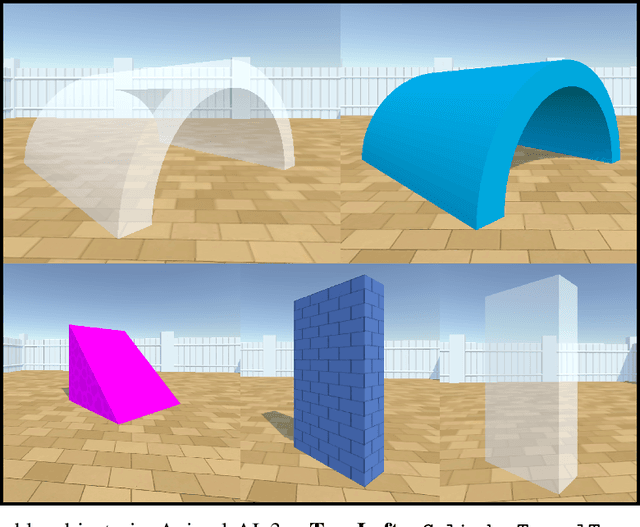José Hernández-Orallo
Measuring Data Science Automation: A Survey of Evaluation Tools for AI Assistants and Agents
Jun 10, 2025Abstract:Data science aims to extract insights from data to support decision-making processes. Recently, Large Language Models (LLMs) are increasingly used as assistants for data science, by suggesting ideas, techniques and small code snippets, or for the interpretation of results and reporting. Proper automation of some data-science activities is now promised by the rise of LLM agents, i.e., AI systems powered by an LLM equipped with additional affordances--such as code execution and knowledge bases--that can perform self-directed actions and interact with digital environments. In this paper, we survey the evaluation of LLM assistants and agents for data science. We find (1) a dominant focus on a small subset of goal-oriented activities, largely ignoring data management and exploratory activities; (2) a concentration on pure assistance or fully autonomous agents, without considering intermediate levels of human-AI collaboration; and (3) an emphasis on human substitution, therefore neglecting the possibility of higher levels of automation thanks to task transformation.
Relative Drawing Identification Complexity is Invariant to Modality in Vision-Language Models
May 14, 2025Abstract:Large language models have become multimodal, and many of them are said to integrate their modalities using common representations. If this were true, a drawing of a car as an image, for instance, should map to the similar area in the latent space as a textual description of the strokes that conform the drawing. To explore this in a black-box access regime to these models, we propose the use of machine teaching, a theory that studies the minimal set of examples a teacher needs to choose so that the learner captures the concept. In this paper we evaluate the complexity of teaching visual-language models a subset of objects in the Quick, Draw! dataset using two presentations: raw images as bitmaps and trace coordinates in TikZ format. The results indicate that image-based representations generally require fewer segments and achieve higher accuracy than coordinate-based representations. But, surprisingly, the teaching size usually ranks concepts similarly across both modalities, even when controlling for (a human proxy of) concept priors, suggesting that the simplicity of concepts may be an inherent property that transcends modality representations.
Cognitive Science-Inspired Evaluation of Core Capabilities for Object Understanding in AI
Mar 27, 2025Abstract:One of the core components of our world models is 'intuitive physics' - an understanding of objects, space, and causality. This capability enables us to predict events, plan action and navigate environments, all of which rely on a composite sense of objecthood. Despite its importance, there is no single, unified account of objecthood, though multiple theoretical frameworks provide insights. In the first part of this paper, we present a comprehensive overview of the main theoretical frameworks in objecthood research - Gestalt psychology, enactive cognition, and developmental psychology - and identify the core capabilities each framework attributes to object understanding, as well as what functional roles they play in shaping world models in biological agents. Given the foundational role of objecthood in world modelling, understanding objecthood is also essential in AI. In the second part of the paper, we evaluate how current AI paradigms approach and test objecthood capabilities compared to those in cognitive science. We define an AI paradigm as a combination of how objecthood is conceptualised, the methods used for studying objecthood, the data utilised, and the evaluation techniques. We find that, whilst benchmarks can detect that AI systems model isolated aspects of objecthood, the benchmarks cannot detect when AI systems lack functional integration across these capabilities, not solving the objecthood challenge fully. Finally, we explore novel evaluation approaches that align with the integrated vision of objecthood outlined in this paper. These methods are promising candidates for advancing from isolated object capabilities toward general-purpose AI with genuine object understanding in real-world contexts.
General Scales Unlock AI Evaluation with Explanatory and Predictive Power
Mar 09, 2025Abstract:Ensuring safe and effective use of AI requires understanding and anticipating its performance on novel tasks, from advanced scientific challenges to transformed workplace activities. So far, benchmarking has guided progress in AI, but it has offered limited explanatory and predictive power for general-purpose AI systems, given the low transferability across diverse tasks. In this paper, we introduce general scales for AI evaluation that can explain what common AI benchmarks really measure, extract ability profiles of AI systems, and predict their performance for new task instances, in- and out-of-distribution. Our fully-automated methodology builds on 18 newly-crafted rubrics that place instance demands on general scales that do not saturate. Illustrated for 15 large language models and 63 tasks, high explanatory power is unleashed from inspecting the demand and ability profiles, bringing insights on the sensitivity and specificity exhibited by different benchmarks, and how knowledge, metacognition and reasoning are affected by model size, chain-of-thought and distillation. Surprisingly, high predictive power at the instance level becomes possible using these demand levels, providing superior estimates over black-box baseline predictors based on embeddings or finetuning, especially in out-of-distribution settings (new tasks and new benchmarks). The scales, rubrics, battery, techniques and results presented here represent a major step for AI evaluation, underpinning the reliable deployment of AI in the years ahead.
Paradigms of AI Evaluation: Mapping Goals, Methodologies and Culture
Feb 21, 2025Abstract:Research in AI evaluation has grown increasingly complex and multidisciplinary, attracting researchers with diverse backgrounds and objectives. As a result, divergent evaluation paradigms have emerged, often developing in isolation, adopting conflicting terminologies, and overlooking each other's contributions. This fragmentation has led to insular research trajectories and communication barriers both among different paradigms and with the general public, contributing to unmet expectations for deployed AI systems. To help bridge this insularity, in this paper we survey recent work in the AI evaluation landscape and identify six main paradigms. We characterise major recent contributions within each paradigm across key dimensions related to their goals, methodologies and research cultures. By clarifying the unique combination of questions and approaches associated with each paradigm, we aim to increase awareness of the breadth of current evaluation approaches and foster cross-pollination between different paradigms. We also identify potential gaps in the field to inspire future research directions.
PredictaBoard: Benchmarking LLM Score Predictability
Feb 20, 2025Abstract:Despite possessing impressive skills, Large Language Models (LLMs) often fail unpredictably, demonstrating inconsistent success in even basic common sense reasoning tasks. This unpredictability poses a significant challenge to ensuring their safe deployment, as identifying and operating within a reliable "safe zone" is essential for mitigating risks. To address this, we present PredictaBoard, a novel collaborative benchmarking framework designed to evaluate the ability of score predictors (referred to as assessors) to anticipate LLM errors on specific task instances (i.e., prompts) from existing datasets. PredictaBoard evaluates pairs of LLMs and assessors by considering the rejection rate at different tolerance errors. As such, PredictaBoard stimulates research into developing better assessors and making LLMs more predictable, not only with a higher average performance. We conduct illustrative experiments using baseline assessors and state-of-the-art LLMs. PredictaBoard highlights the critical need to evaluate predictability alongside performance, paving the way for safer AI systems where errors are not only minimised but also anticipated and effectively mitigated. Code for our benchmark can be found at https://github.com/Kinds-of-Intelligence-CFI/PredictaBoard
Leaving the barn door open for Clever Hans: Simple features predict LLM benchmark answers
Oct 15, 2024Abstract:The integrity of AI benchmarks is fundamental to accurately assess the capabilities of AI systems. The internal validity of these benchmarks - i.e., making sure they are free from confounding factors - is crucial for ensuring that they are measuring what they are designed to measure. In this paper, we explore a key issue related to internal validity: the possibility that AI systems can solve benchmarks in unintended ways, bypassing the capability being tested. This phenomenon, widely known in human and animal experiments, is often referred to as the 'Clever Hans' effect, where tasks are solved using spurious cues, often involving much simpler processes than those putatively assessed. Previous research suggests that language models can exhibit this behaviour as well. In several older Natural Language Processing (NLP) benchmarks, individual $n$-grams like "not" have been found to be highly predictive of the correct labels, and supervised NLP models have been shown to exploit these patterns. In this work, we investigate the extent to which simple $n$-grams extracted from benchmark instances can be combined to predict labels in modern multiple-choice benchmarks designed for LLMs, and whether LLMs might be using such $n$-gram patterns to solve these benchmarks. We show how simple classifiers trained on these $n$-grams can achieve high scores on several benchmarks, despite lacking the capabilities being tested. Additionally, we provide evidence that modern LLMs might be using these superficial patterns to solve benchmarks. This suggests that the internal validity of these benchmarks may be compromised and caution should be exercised when interpreting LLM performance results on them.
100 instances is all you need: predicting the success of a new LLM on unseen data by testing on a few instances
Sep 05, 2024Abstract:Predicting the performance of LLMs on individual task instances is essential to ensure their reliability in high-stakes applications. To do so, a possibility is to evaluate the considered LLM on a set of task instances and train an assessor to predict its performance based on features of the instances. However, this approach requires evaluating each new LLM on a sufficiently large set of task instances to train an assessor specific to it. In this work, we leverage the evaluation results of previously tested LLMs to reduce the number of evaluations required to predict the performance of a new LLM. In practice, we propose to test the new LLM on a small set of reference instances and train a generic assessor which predicts the performance of the LLM on an instance based on the performance of the former on the reference set and features of the instance of interest. We conduct empirical studies on HELM-Lite and KindsOfReasoning, a collection of existing reasoning datasets that we introduce, where we evaluate all instruction-fine-tuned OpenAI models until the January 2024 version of GPT4. When predicting performance on instances with the same distribution as those used to train the generic assessor, we find this achieves performance comparable to the LLM-specific assessors trained on the full set of instances. Additionally, we find that randomly selecting the reference instances performs as well as some advanced selection methods we tested. For out of distribution, however, no clear winner emerges and the overall performance is worse, suggesting that the inherent predictability of LLMs is low.
Learning Alternative Ways of Performing a Task
Apr 03, 2024Abstract:A common way of learning to perform a task is to observe how it is carried out by experts. However, it is well known that for most tasks there is no unique way to perform them. This is especially noticeable the more complex the task is because factors such as the skill or the know-how of the expert may well affect the way she solves the task. In addition, learning from experts also suffers of having a small set of training examples generally coming from several experts (since experts are usually a limited and expensive resource), being all of them positive examples (i.e. examples that represent successful executions of the task). Traditional machine learning techniques are not useful in such scenarios, as they require extensive training data. Starting from very few executions of the task presented as activity sequences, we introduce a novel inductive approach for learning multiple models, with each one representing an alternative strategy of performing a task. By an iterative process based on generalisation and specialisation, we learn the underlying patterns that capture the different styles of performing a task exhibited by the examples. We illustrate our approach on two common activity recognition tasks: a surgical skills training task and a cooking domain. We evaluate the inferred models with respect to two metrics that measure how well the models represent the examples and capture the different forms of executing a task showed by the examples. We compare our results with the traditional process mining approach and show that a small set of meaningful examples is enough to obtain patterns that capture the different strategies that are followed to solve the tasks.
* 32 pages, Github repository, published paper, authors' version
Animal-AI 3: What's New & Why You Should Care
Dec 18, 2023



Abstract:The Animal-AI Environment is a unique game-based research platform designed to serve both the artificial intelligence and cognitive science research communities. In this paper, we present Animal-AI 3, the latest version of the environment, outlining several major new features that make the game more engaging for humans and more complex for AI systems. New features include interactive buttons, reward dispensers, and player notifications, as well as an overhaul of the environment's graphics and processing for significant increases in agent training time and quality of the human player experience. We provide detailed guidance on how to build computational and behavioural experiments with Animal-AI 3. We present results from a series of agents, including the state-of-the-art Deep Reinforcement Learning agent (dreamer-v3), on newly designed tests and the Animal-AI Testbed of 900 tasks inspired by research in comparative psychology. Animal-AI 3 is designed to facilitate collaboration between the cognitive sciences and artificial intelligence. This paper serves as a stand-alone document that motivates, describes, and demonstrates Animal-AI 3 for the end user.
 Add to Chrome
Add to Chrome Add to Firefox
Add to Firefox Add to Edge
Add to Edge